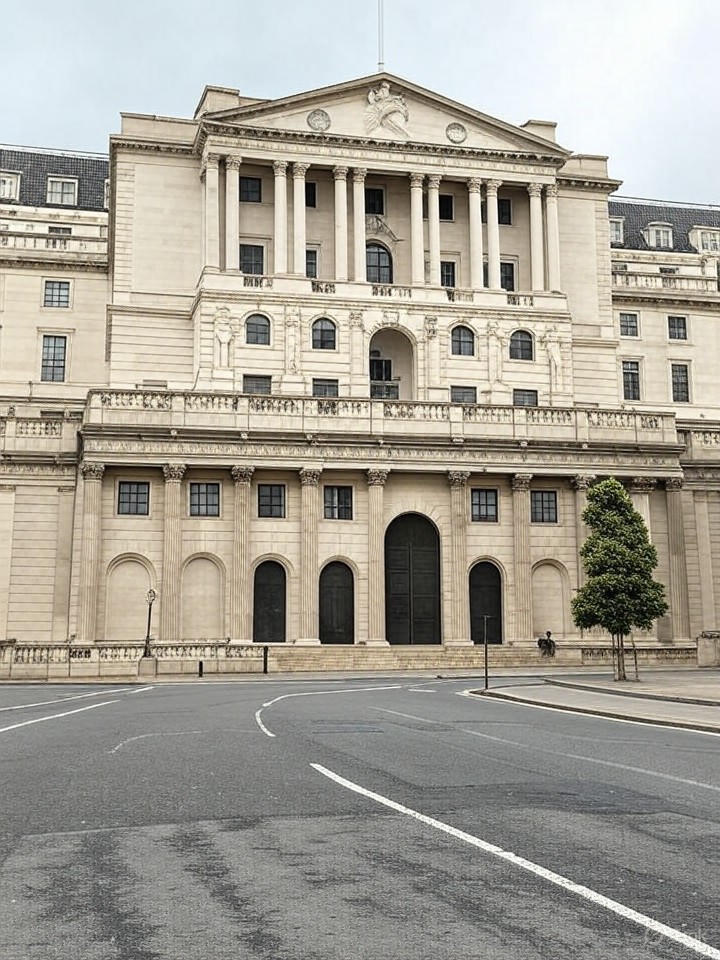The Bank of England’s decision on August 7, 2025, to slash its key interest rate to 4% marks a pivotal moment in the United Kingdom’s monetary policy saga, reflecting a delicate balancing act amid persistent economic headwinds. This cut, the fifth since August 2024, when rates peaked at a 16-year high of 5.25%, underscores the central bank’s response to sluggish growth, rising unemployment, and external pressures like potential U.S. tariffs under a possible Trump administration. Policymakers voted 5-4 to reduce the rate by a quarter percentage point, a move that BBC News described as widely anticipated yet fraught with division, highlighting internal debates over inflation risks.
The Monetary Policy Committee (MPC) cited weakening labor market data and subdued consumer spending as key drivers, even as inflation lingers above the 2% target. Recent figures show UK unemployment ticking up to 4.4%, with business confidence waning, prompting the Bank to prioritize growth stimulation over aggressive inflation control. This echoes earlier cuts in May 2025, when rates fell to 4.25%, bringing relief to borrowers but squeezing savers, as detailed in a Guardian analysis.
A Historic Re-Vote and Internal Tensions
Intriguingly, the decision involved a rare re-vote, as initial ballots reportedly deadlocked, according to insights from ZeroHedge. This procedural twist underscores the MPC’s fractures, with hawks like Chief Economist Huw Pill arguing for caution amid sticky wage growth and services inflation projected to hit 3.7% later in the year. Doves, however, pointed to forecasts of GDP growth stalling at just 0.75% for 2025, down from prior estimates, painting a picture of an economy teetering on recession’s edge.
Market reactions were mixed: the pound sterling initially dipped against the dollar, boosting exporters, while London stocks edged higher on hopes of cheaper borrowing fueling investment. Yet, bond yields rose modestly, signaling investor skepticism about the Bank’s ability to tame inflation without further fiscal support from Chancellor Rachel Reeves’ government.
Implications for Borrowers and the Broader Economy
For mortgage holders, the cut spells immediate respite; variable-rate loans could see monthly payments drop by £20-£30 on average, per calculations from CNBC. Fixed-rate deals, however, may lag as lenders digest the outlook. Businesses, particularly in manufacturing and retail, stand to benefit from lower financing costs, potentially averting layoffs amid rising redundancies reported in recent labor surveys.
Conversely, savers face diminished returns, with high-street banks already trimming deposit rates, exacerbating the squeeze on retirees and conservative investors. This dynamic fuels debates on wealth inequality, as asset owners—think property and equities—reap gains from looser policy, while wage earners grapple with real-term income erosion.
Global Context and Future Projections
Looking abroad, the BoE’s move aligns with global easing trends, though it’s more measured than the Federal Reserve’s aggressive cuts. Posts on X (formerly Twitter) from financial analysts highlight sentiment that UK rates could fall further to 3.5% by year-end if recession risks materialize, with users like market watchers noting the pound’s vulnerability to dollar strength. A Euronews report emphasizes how this positions the UK economy at its most accommodative since early 2023, yet warns of imported inflation from U.S. trade policies.
Forward guidance suggests gradual reductions ahead, contingent on data. The Bank’s updated forecasts, incorporating potential Trump-era tariffs, predict inflation averaging 2.5% in 2026, but only if domestic demand rebounds. Critics, including opposition figures, argue this piecemeal approach risks prolonging stagnation, echoing X discussions where economists like Prem Sikka call for bolder fiscal reforms to curb corporate profiteering and boost incomes.
Strategic Considerations for Investors and Policymakers
Industry insiders view this as a test of Governor Andrew Bailey’s leadership, with the re-vote exposing vulnerabilities in consensus-building. For investors, opportunities abound in undervalued UK equities, particularly in sectors like housing and consumer goods, as lower rates could ignite a lending boom. However, hedging against sterling depreciation remains prudent, given geopolitical uncertainties.
Ultimately, the August cut encapsulates the BoE’s high-stakes gamble: easing to nurture growth while vigilant against inflation’s resurgence. As The Guardian noted pre-decision, a three-way split among rate-setters was foreseen, yet the outcome reinforces the Bank’s data-dependent stance. With the next MPC meeting in September, all eyes are on incoming jobs and CPI data to gauge if this easing cycle accelerates or stalls, shaping the UK’s economic trajectory into 2026.




 WebProNews is an iEntry Publication
WebProNews is an iEntry Publication